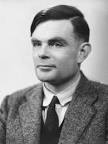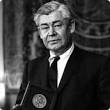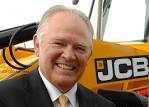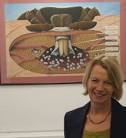| Date | Text | |
|---|---|---|
30 Nov 1952

Rudolph Pariser |
Rudolph Pariser (chemistry) Rudolph Pariser, Robert G. Parr and John Pople publish their computational quantum chemistry theory for approximating molecular orbitals. |
|
30 Nov 1952

Tom Kilburn |
Tom Kilburn (computer sciences) Tom Kilburn at the University of Manchester completes a device called MEG, which performs floating-point calculations. This machine evolves into the first transistorized computer, the Metro-Vickers MV950, ultimately leading to the mass production of computers. |
|
30 Nov 1952

Alan Turing |
Alan Turing (computer sciences) Alan Turing publishes an article describing the first 1,104 zeroes of the Riemann zeta-function, the culmination of fifteen years of work on how to use computers to tackle a fundamental problem in number theory. |
|
30 Nov 1952

Maurice Ewing |
Maurice Ewing (earth sciences) Maurice Ewing and Bruce Heezen discover the deep canyon running along the center of the Mid-Atlantic Ridge, an important contribution to the theory of plate tectonics. |
|
30 Nov 1952

Cincinnati |
Cincinnati (medicine and human s) Cincinnati psychiatrist Max Lurie and Harry Salzer coin the term antidepressant. |
|
30 Nov 1952

B. F. Skinner |
B. F. Skinner (medicine and human s) B. F. Skinner publishes the book Science and Human Behavior, a controversial attempt to apply the results of behavioral studies of laboratory animals to human psychology. |
|
30 Nov 1952

Frederick Reines |
Frederick Reines (physics) Frederick Reines and Clyde Cowan perform the first neutrino detection experiments, constructing the first neutrino detector (a cadmium-water target) and using the Hanford Site nuclear facility in Washington State as the neutrino source. This work, first discussed with Enrico Fermi and others in 1951–2, leads to the 1995 Nobel Prize in Physics. |
|
30 Nov 1952

J. C. Bamford |
J. C. Bamford (technology) J. C. Bamford of England introduce the backhoe loader. |
|
30 Nov 1952

Jet Propulsion Laboratory |
Jet Propulsion Laboratory (technology) The Jet Propulsion Laboratory completes development of the SSM-A-17 Corporal I rocket. This is the first American surface-to-surface ballistic missile, powered by a liquid-fuelled motor utilizing nitric acid as the oxidizer. |
|
30 Nov 1952

Rudolf Carnap |
Rudolf Carnap Rudolf Carnap publishes an article called "Testability and Meaning" in Readings in the Philosophy of Science, which moves away from the philosophical position of logical positivism with respect to science (particularly the heavily mathematical sciences, such as physics). Carnap instead emphasizes the idea that progress in science depends on the gradual accumulation of many small results that support human understanding of the world, a view more in line with Ludwig Wittgenstein's later philosophy and the biological sciences. |
|
30 Nov 1952

Pat Nuttall |
birth Pat Nuttall Pat Nuttall, British virologist and acarologist. |